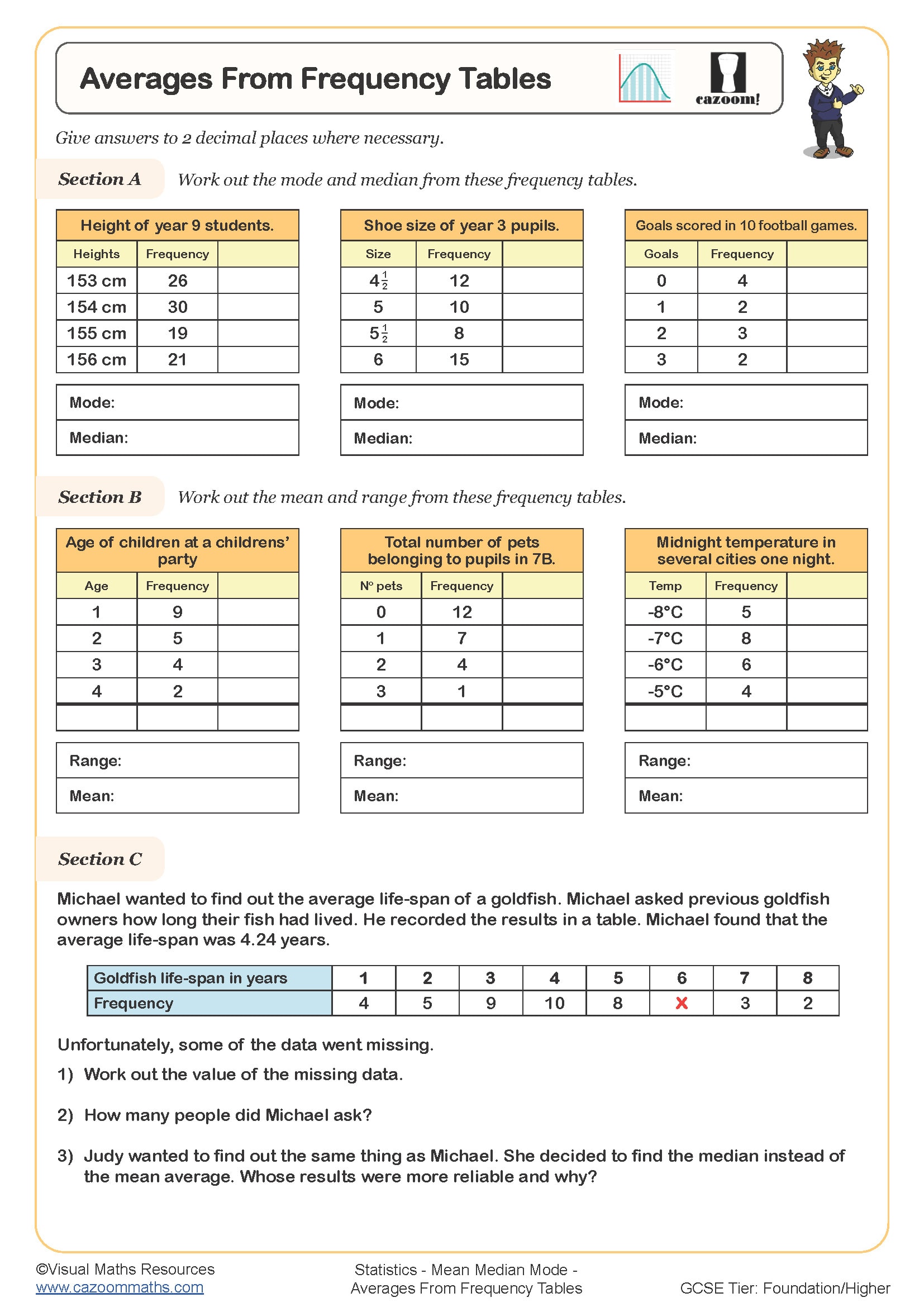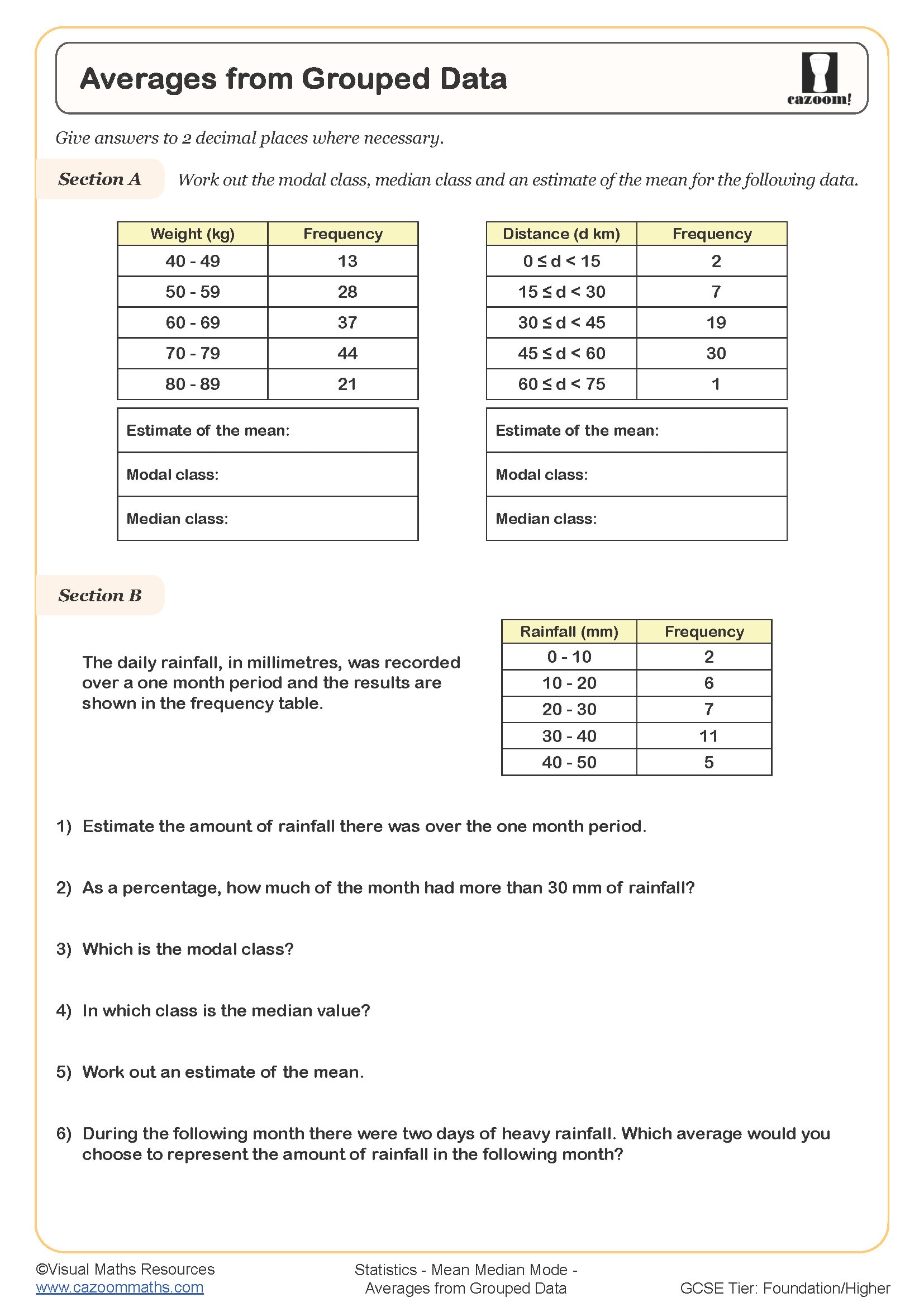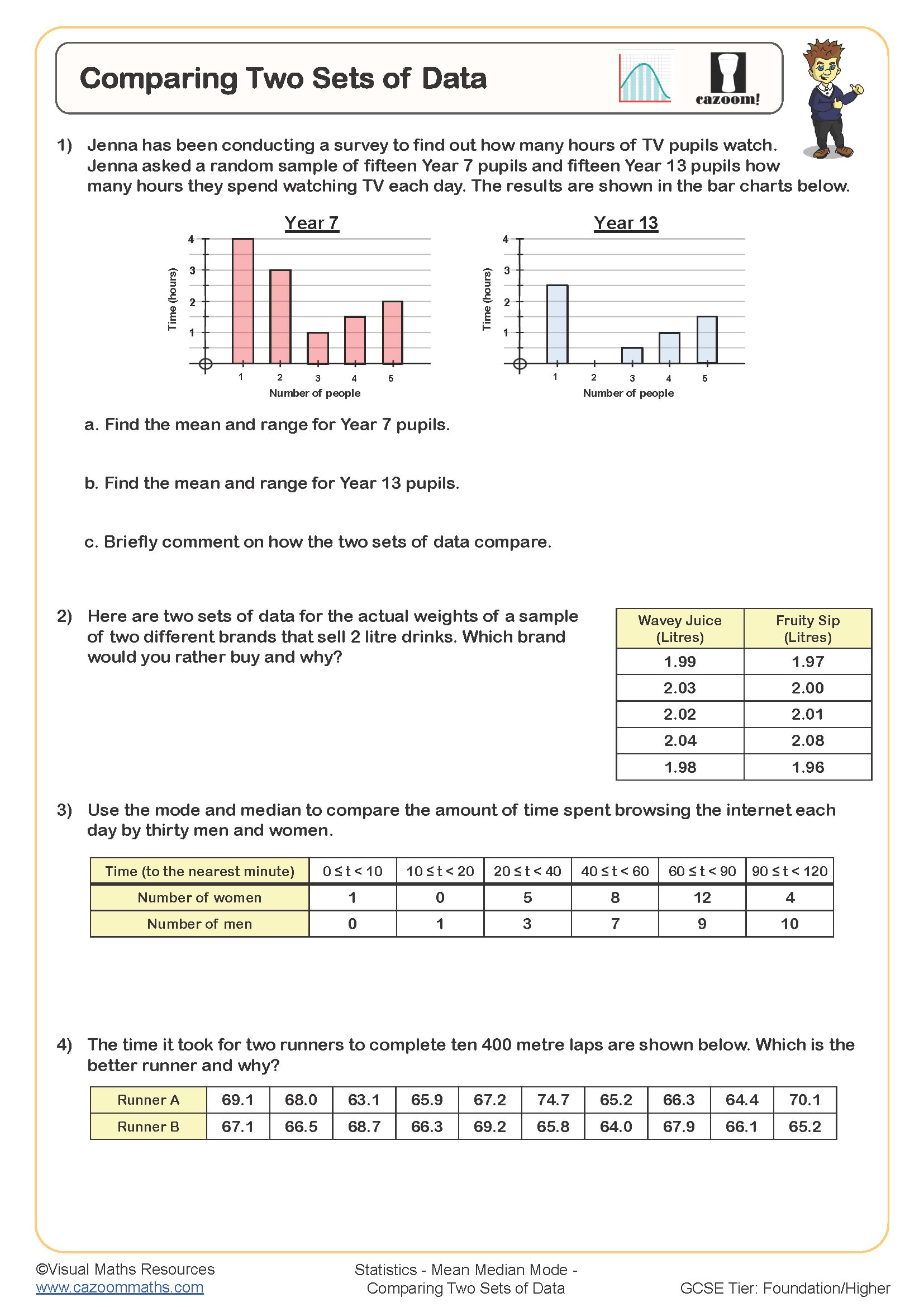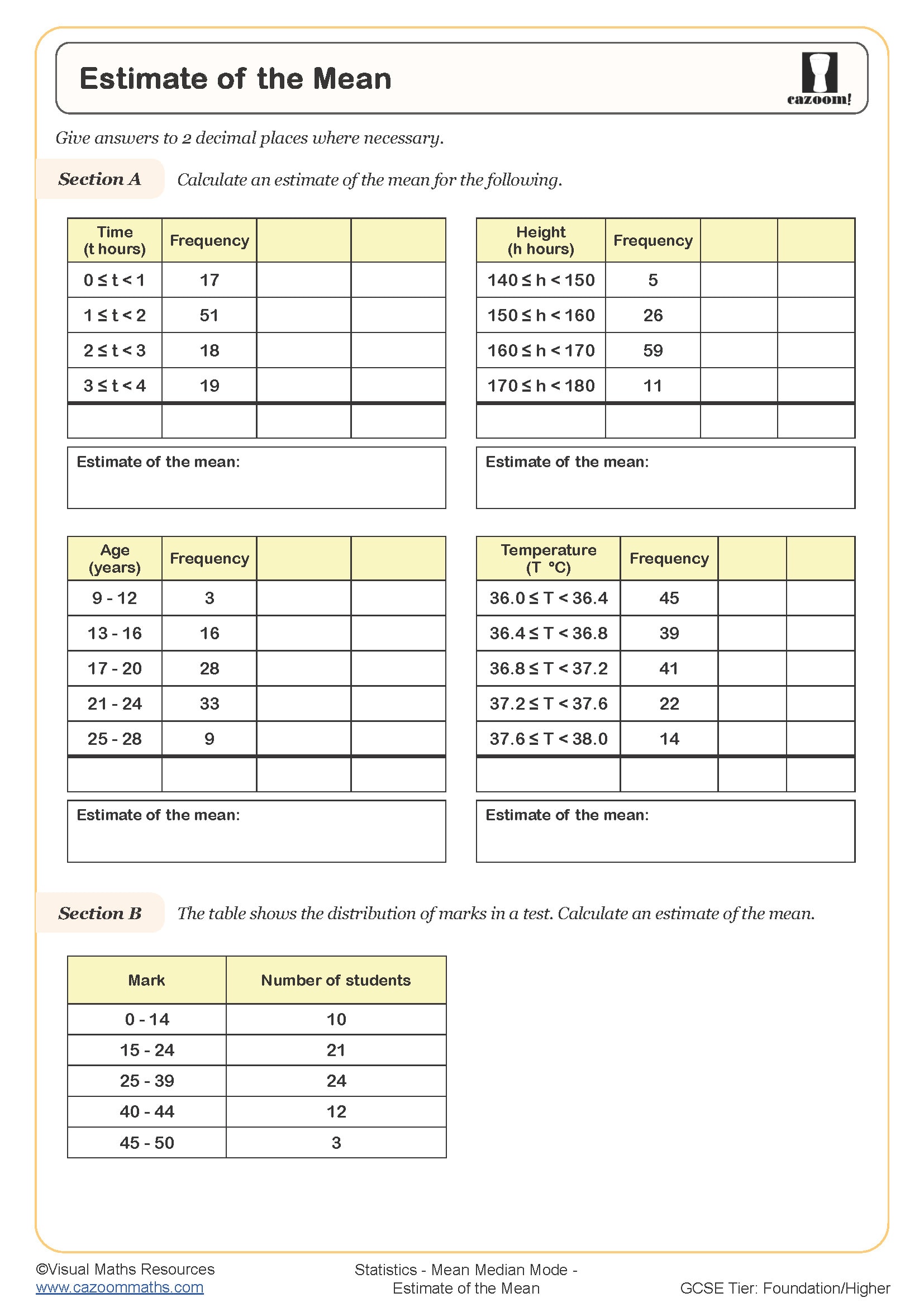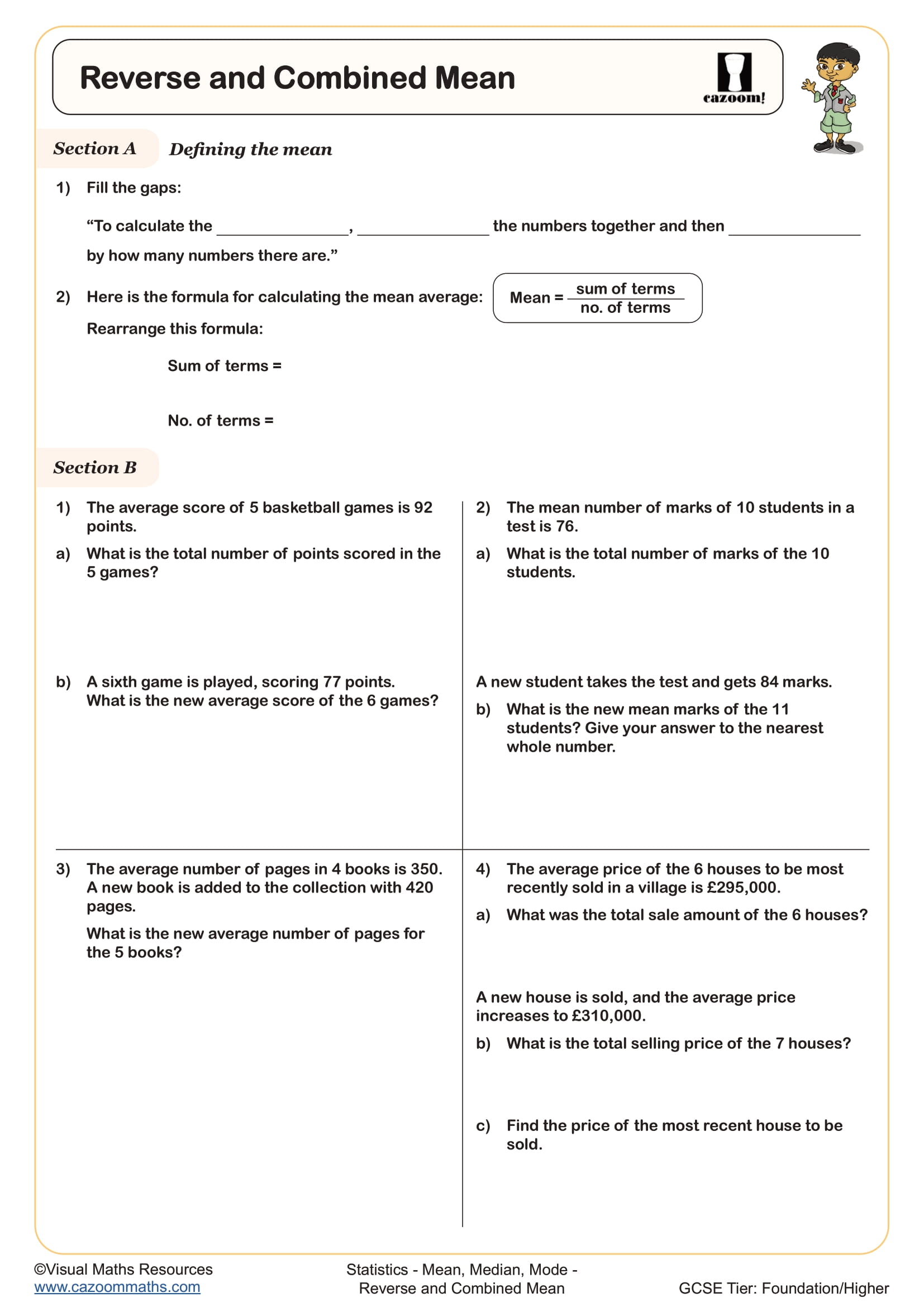Year 9 Mean Median Mode Worksheets
Get Consistent Accuracy Through Our Printable PDF Year 9 Statistics Worksheets
Statistical thinking develops through systematic exposure to varied problem types, and these worksheets provide exactly that structured pathway. Students need to learn different calculation techniques because their datasets contain whole numbers and complex decimal values. The sequence of instruction starts with basic calculations before moving to frequency tables to avoid student confusion while keeping the learning process consistent. Students develop their ability to distinguish between mean, median and mode through regular practice of these materials. Students develop into analytical thinkers who question numbers instead of accepting them after receiving this deeper analytical training.
Specific learning benefits include:
• Learn calculation techniques for ungrouped data
• Interprets frequency tables with accuracy
• Develops strategic thinking for problem selection
• Strengthens mental arithmetic through varied practice
• Recognises patterns in statistical distributions
• Builds resilience through graduated challenges
• Connects abstract concepts to meaningful contexts
Complete Topic List: What’s Included in KS3 This Statistics Activities Pack
These carefully sequenced worksheets guide students from concrete numerical examples through pictorial representations to abstract statistical reasoning, ensuring deep conceptual understanding develops naturally. Worked solutions accompany each worksheet, demonstrating complete calculation methods that reveal mathematical thinking processes rather than just final answers. The progression from simple lists to grouped data mirrors the curriculum's expectations whilst providing extension opportunities for advanced learners.
The worksheets in this collection include:
• Mean from Lists — calculating averages from sets of positive and negative numbers
• Median with Odd and Even Sets — finding middle values in ordered data sequences
• Mode Identification — recognising single, multiple and no-mode situations in data
• Range Calculations — determining spread, including negative numbers
• Mean from Frequency Tables — working with organised data in tabular format
• Finding Missing Values — using given averages to complete incomplete data sets
• Grouped Data Averages — estimating statistics from class intervals
• Mixed Average Problems — selecting and calculating appropriate measures
• Comparing Data Sets — using averages to analyse different groups
• Real-World Applications — interpreting statistics in practical contexts
The Parents’ Guide to Stress-Free Homework With Year 9 Mean, Median, Mode Worksheets
These worksheets save valuable planning time whilst providing the differentiation needed to support every learner in mixed-ability classes. The worksheets have horizontal and vertical organisation, which enables teachers to create various starting points for students while keeping their overall learning goals in mind. Answer sheets include detailed working that helps parents understand the methods being taught, enabling them to provide effective support even if their own school experience used different approaches. The visual presentation enables students to grasp statistics more effectively through its step-by-step approach, which presents complex problems as manageable sequences of learning. The worksheets meet curriculum standards exactly while providing additional learning possibilities for students who wish to advance their knowledge past basic material. The uniform structure of the collection enables students to develop self-reliance because they understand their work responsibilities, which allows them to work independently without needing ongoing supervision.
From Data to Games: Real-Life Mean, Median, Mode for Year 9 Pupils
Young people encounter averages constantly, though they rarely recognise these mathematical concepts operating behind everyday decisions and information.
• Through sports performance data analysis, teams gain the ability to detect player abilities and monitor player development from one season to the next.
• Weather pattern research requires scientists to examine both standard temperature measurements and precipitation records.
• Standard monthly usage data needs to be used for mobile phone contract evaluation.
• The process of understanding experimental findings from biology and chemistry laboratory work forms the core of this paper.
• The evaluation of gaming statistics functions as a tool to develop improved strategic methods which produce superior results.
• People need to comprehend economic indicators, which include average wages and house prices.
• Understanding how to interpret health data, which includes heart rate and fitness metrics.
• The analysis of music streaming data enables researchers to discover patterns in user behaviour and track changes in music consumption.
